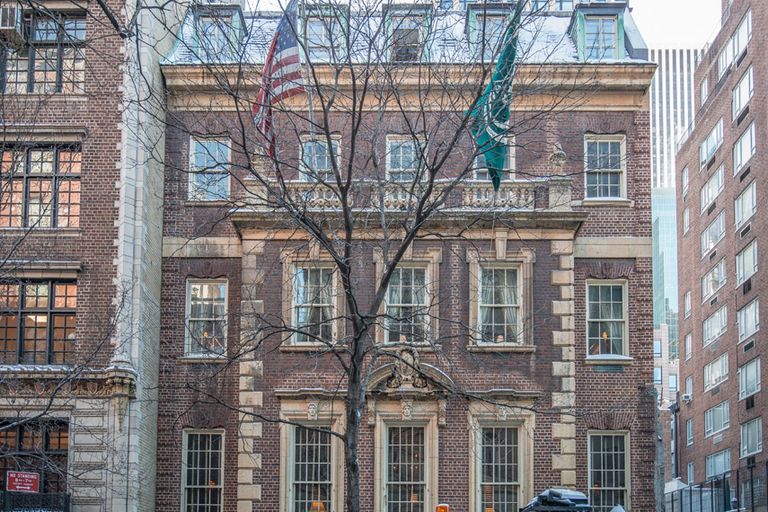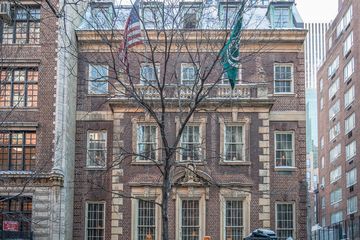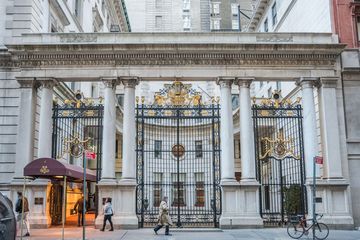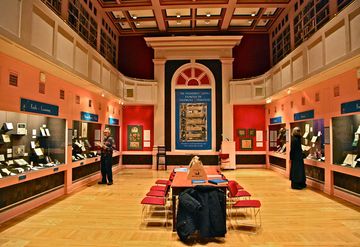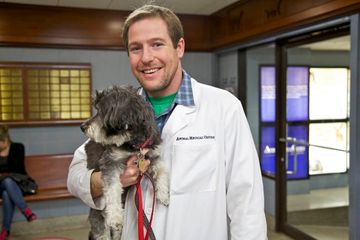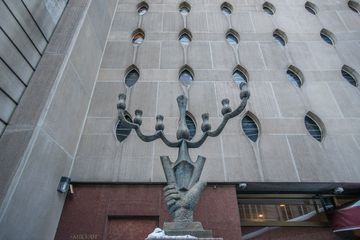No one knows if there is a key to the door of the Animal Medical Center. The veterinary hospital has never needed one: it has been running for twenty-four hours each day ever since it opened in 1962. The history of AMC, however, runs deeper; Ellin Prince Speyer, the founder of the Women’s Auxiliary to the American Society for the Prevention of Cruelty to Animals, planted the seeds of the Center in 1909 when the Auxiliary established a clinic for animals whose owners were not financially able to go to existing veterinary hospitals. The Center was a success, thus allowing the organization to begin raising funds for a permanent animal care facility. This goal was seen to fruition in 1914 when a hospital opened on the Lower East Side. In 1960, construction began on the current grounds, which is now one of the few teaching veterinary hospitals in the world. Over one thousand veterinarians from around the globe have come through training at the AMC. Upon entering the eight-floor building and seeing the tiled animal mural decorating the elevators, I was met by the Center's enthusiastic public relations person, Barbara Ross. She was eager to give me a guided tour of the facilities. As she led me through the first hallway, I met Matt, sitting in his scrubs with one hand on his computer and the other holding a small dog. This was the perfect image to set the stage for my walk. The building mirrored a human hospital, but with a more relaxed atmosphere and animals of all shapes and sizes being attended to and comforted by staff members. It was a special moment for me when I stepped into Dr. Stephen Riback's dental office, where he agreed with my initial impression: "It's more like a people hospital than an animal hospital. " I was proud to watch this warm and gentle man, whom I have known my entire life, taking care of a dog that had just been through major dental surgery. Stephen explained that he had removed some teeth from the King Charles Spaniel who had periodontal disease - which causes the bone in the dog's gums to recede from the teeth. Stephen assured me that the dog would be much happier now, and that the other organs would be saved from the ailments that often follow from progressive periodontal symptoms. The dog's adorable little tongue was clamped in a permanent lolling position, and the woman assisting in the operation made sure that his open eyes were moistened while he was sedated. Stephen went on to tell me about some of the other dental operations he has handled: he has performed root canal procedures on police dogs that break their teeth during "bite" work, and he once utilized his dental expertise on a Bengal Tiger at the Bronx Zoo. As a rule, doctors from AMC do not work at the zoos, since both Central Park and the Bronx have their own medical team. Dentistry, however, is not taught at most veterinary schools, so Stephen is often called upon for his unique skills. After saying good-bye to Stephen, I stepped back into the hallway with Barbara, where she told me about a recent case of a dog who arrived on 62nd Street blind and left being able to see after the removal of its cataracts. Clearly medical miracles are performed at AMC. On the subject of blindness, Barbara mentioned that every guide dog is treated without charge. Though animals occasionally come in for general wellness visits, for the most part they are admitted for problems that regular vets cannot handle. As Barbara said, "The animals are primarily the sickest of the sick. "Continuing on, Barbara proudly pointed out the imposing CT scan and MRI machines, and commented that "some human hospitals do not own anything close to this level of equipment. " I was then shown a series of astonishing photographs of a young horse receiving a CAT scan. Following this, Barbara led me to a hybrid operating room for interventional endoscopy and radiology, which she said is the only one of its kind in the world. And, if I had not been impressed enough, I was then made aware of the hospital's underwater treadmill that aides animals with arthritis and hip dysplasia. When I looked at Barbara in amazement, she explained that staff members entice their patients with peanut butter, thereby encouraging them to swim forward to lick this treat. This allows them to participate in physical therapy. Brilliant! Barbara shared with me that there have often been times over the decades that human physicians have collaborated with veterinarians, including teaming up with Sloan Kettering where, together, they came up with the first canine vaccine for cancer. From what I witnessed, opening their medical center in the same vicinity as what is termed Hospital Row was the perfect decision back in the 1960s. And there is no doubt that these animals are treated with the same care and professional expertise as the human patients surrounding them.
